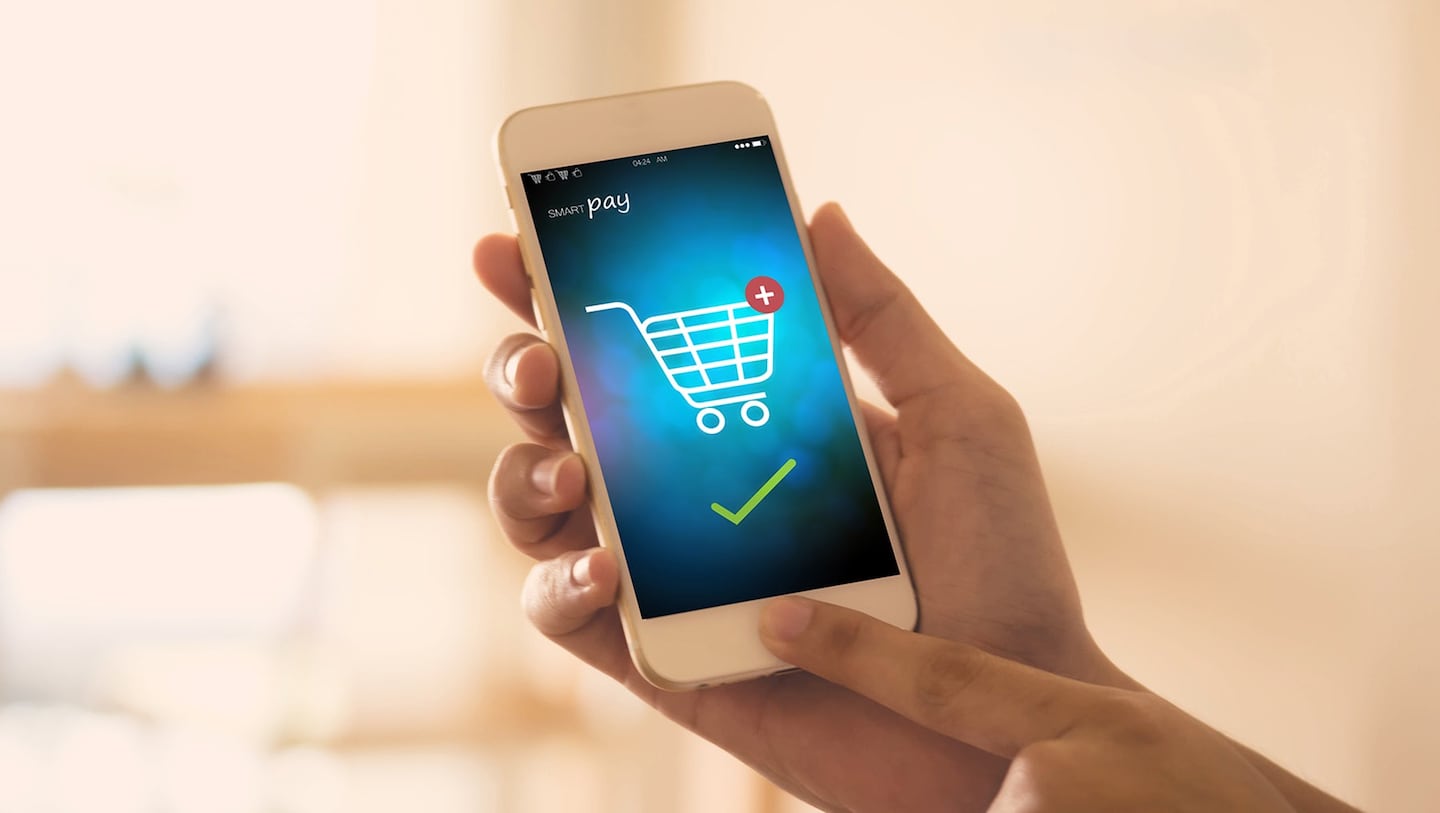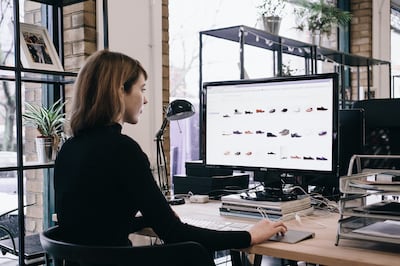
The Business of Fashion
Agenda-setting intelligence, analysis and advice for the global fashion community.

Agenda-setting intelligence, analysis and advice for the global fashion community.

LONDON, United Kingdom — 2017 was the worst year on record for brick-and-mortar retail. By December, more than 6,985 stores closed across the US, according to retail think-tank Fung Global Retail & Technology. That's up more than 200 percent from a year ago, according to the firm's findings. It also beats the previous all-time high of 6,163 store closings that took place during the 2008 financial crisis, according to estimates by Credit Suisse.
The reality is that many stores are closing for the same reason they’ve always closed — they simply don’t meet the needs and demands of customers. But at a time when consumers are empowered with choice and market conditions are increasingly volatile, new technologies can help brands and retailers drive valuable business efficiencies, and improve the overall customer experience and value proposition.
“The biggest upside to technology in fashion will be the ability to offer consistency, and being able to personalise the customer’s shopping patterns,” said Robert Burke, chief executive of retail consultancy firm Robert Burke Associates. Indeed, fashion companies that effectively deploy the right technologies will be able to enhance their competitive advantage by personalising products and shopping experiences, and refining logistical processes that nibble away at budgets.
However, fashion has been slow to harness many of these opportunities. “We’re only scratching the surface right now of technologies like virtual reality or artificial intelligence,” said Doug Stephens, a retail industry futurist and author of “Reengineering Retail: The Future of Selling in a Post-Digital World.” “But directionally, we can already envision a point where the margin of error for consumer shopping for clothing — both online and offline — will be almost nil.”
ADVERTISEMENT
Here, BoF spotlights the five important technology innovations that can help brands and retailers boost their businesses.
Artificial Intelligence
Artificial intelligence has become one of the biggest technological developments in business in recent years, with its ability to help turn large and diverse data sets into enriched information that can help improve speed, cost and flexibility across the value chain.
Rapid advances in machine learning processing have already pushed artificial intelligence (AI) into the mainstream, and by 2020, the market for machine-learning applications is estimated to reach £30 billion ($39.5 billion at current exchange), according to the International Data Corporation. “It is, by far, the most important technology that is already here, growing and will change the fashion industry,” Javier Seara, partner and managing director of the Boston Consulting Group, told BoF.

Thread uses algorithms and human stylists to help men buy clothes | Source: Thread
In fashion, AI has the ability to help brands and retailers with predictive forecasting, capacity planning and merchandising. This means that consumers can enjoy the benefits of better product availability and faster, more accurate deliveries. According to 2017 findings by McKinsey & Company, an AI-based approach could reduce forecasting errors by up to 50 percent, while overall inventory reductions of 20 to 50 percent are feasible.
In addition to supply chain benefits, AI can also help create a smoother browsing experience and improve customer retention through personalisation. Online platforms like Amazon, Alibaba, JD.com and Zalando use AI enhancements to help generate precise product search results and display virtual storefronts tailored to individual shoppers, based on their unique characteristics and preferences.
“Retailers can leverage data to provide a more seamless and personal experience for customers, which increases conversion, repeat purchase and loyalty,” said Karen McCormick, chief investment officer at VC firm Beringea, whose portfolio includes personal styling service Thread, which uses AI and machine-learning to help men buy clothes.
ADVERTISEMENT
Augmented Reality
Augmented reality’s roots go back to 1992 to a US Air Force-funded project, called Virtual Fixtures. The technology, which offers a real-time view of one's immediate surroundings altered or enhanced by computer generated information, was designed to help surgeons operate remotely, while enhancing their accuracy, by seamlessly blending in real-world information such as the location of major arteries. It improved performance by up to 70 per cent.
Augmented reality (AR) has evolved a lot since then, but often, it is still treated as a novelty rather than to solve real problems in fashion. For example, when Burberry launched an augmented reality feature, the tool was designed to interact with user's cameras feeds to digitally redecorate their surroundings with Burberry-inspired drawings by artist Danny Sangra. The capabilities of AR are so much more, and could be a significant sales tool for the retail industry.
Unlike virtual reality (VR), AR has lower barriers to adoption. Unlike the latter, it does not require dedicated hardware as it is built to work with smartphones and tablets — devices that are already available to most consumers in the developed world. “AR capabilities are now available on over 300 million phones worldwide and it will be up to 1 billion by the end of 2018, especially as Google’s AR software, ARCore, comes online,” said Ari Bloom, chief executive of San Francisco start-up Avametric.
Unsurprisingly, beauty brands have been early to AR. L'Oréal is among the many cosmetics companies offering AR-focused apps, allowing for convenience and eliminating the mess of testing physical products in stores. It's a move that is working: More than 20 million users have downloaded L'Oréal's Makeup Genius app, whose AR function lets people test combinations of beauty products on their phones. Beauty app Meitu helped drive sales for Charlotte Tilbury: 13 percent of users who tried the lipstick through the app in 2017 clicked the "buy" button.
AR allows for convenience and eliminates the mess of testing physical products in stores.
Some fashion brands are starting to explore the opportunities. In January 2017, Gap unveiled a digital dressing room, developed by Avametric in collaboration with Google, which allows consumers to "try on" clothes without having to step into a store. Eyewear brand Warby Parker uses a combination of facial recognition and augmented reality, so customers can see what they look like in different frames. In January 2018, Amazon patented a smart mirror that uses AR to virtually overlay clothes on to users, to help stylise their look.
“It’s the ideal mix of digital technology living in the physical world,” said Bloom. By letting customers try clothes on virtually, the experience places no restrictions on the number of items that can be tried on, which means that customers may easily be persuaded to explore more items of clothing than they normally would in-store. It can also suggest clothing based on known user preferences or whatever is popular at the time, allowing for customers to broaden their horizons. As for online retailers, it could reduce the number of returned items, an industry-wide frustration.
Blockchain
ADVERTISEMENT
The underlying technology driving cryptocurrencies such as Bitcoin, blockchain is a decentralised and distributed digital record that offers new opportunities for managing product safety, authenticity and ethical standards. Records cannot be altered after they have been added to the blockchain. The global blockchain technology market is predicted by Statista to reach $339.5 million in size, and is forecast to grow to $2.3 billion by 2021.

De Beers' diamond mines | Source: De Beers
The most obvious use of this technology in fashion is to verify the originality of a garment. Microchips utilising blockchain can tell a customer with complete certainty whether a piece of clothing is genuine or an imitation; whether it was stolen, where it was made and the product’s general history. All this information could be accessible via a smartphone, and could help prevent counterfeiting and theft.
According to the OECD and EU’s Intellectual Property Office, imports of counterfeit and pirated goods are worth nearly half a trillion dollars a year, or around 2.5 percent of global imports. The organisation put the value of imported fake goods at $461 billion in 2013, compared with total imports in world trade at $17.9 trillion.
Blockchain can help retailers garner greater trust and brand loyalty throughout the product lifecycle, as it can tell consumers not just where an item was made, but also who it was made by, the conditions they worked in and how much they were paid. Shoppers could also learn about the composition of a garment, where the fabric was grown and what chemicals have been used.
De Beers, the world's biggest diamond producer by the value of its gems, aims to launch the first industry-wide blockchain this year, to track gems each time they change hands from the moment they are dug up from the ground. The technology could be used to verify the authenticity of diamonds and ensure they are not from conflict zones, where gems could be used to finance violence. However, the technology has yet to be more widely explored by the fashion industry. "This is in the early stages and brands are not yet thinking about it," said BCG's Seara, adding that the biggest challenge for fashion would be finding "the people who are able to work with the technology and implement it."
Contactless Shopping
High-tech automated convenience stores are infiltrating Beijing and Shanghai. Powered by WeChat, a Chinese mobile messaging service, these unmanned stores require no checkout, no cash and no salespeople. Customers scan QR codes to enter the store and select products, and then pay using their mobile WeChat wallets. Sensors on the shelves detect the removal of items. Once an item has been removed, it is linked to the shopper's unique ID in the smartphone app to prevent theft.
Outside of China, Zara has introduced self-checkout stations at a new 65,000-square-foot store in Madrid, its largest store in the world, which opened in April last year. Meanwhile, Rebecca Minkoff's flagship store in New York lets customers buy anything from $200 handbags to $1,500 jackets on their own, without dealing with a sales associate. Amazon is also trialling an Amazon Go store where there are no checkouts, and Walmart plans to launch a contactless shopping store in Long Island by the end of 2018.
The act of paying is often treated as something that is detached from the experience.
Contactless shopping helps to make the checkout process more seamless, efficient and convenient by eliminating hassles like long checkout lines or inconvenient hours. Still, half of all retailers still do not accept contactless payments, even though “touch-and-go” spending is expected to increase by more than 300 percent over the next four years, according to British bank Barclays. Analysts at Technavio, a market research firm, however, predict that the global retail self-checkout market will grow steadily over the next four years, posting a CAGR of almost 18 percent by 2021.
“In the retail industry, the act of paying is often treated as something that is detached from the experience. You have a great shopping experience and when it’s over, it’s ‘time to pay.’ But the act of checking out of a store is part of the experience,” said Stephens. Many retailers already have the capability to eliminate checkouts, but whether they choose to do so or not is “a branding decision,” he said. “How you choose to approach that depends on the brand story you’re telling, the positioning of your brand, and ultimately, the experience that you’re trying to craft and curate.”
“In 2018, there will be two types of stores: one for convenience where shoppers will go there, to get something. The second one has a lot to do with experience. For a retailer like Primark, convenience is always more important. A luxury brand like Burberry might focus on the experience,” agreed Seara. “In the end, brands might even have two models. If you’re a big retailer with multiple locations, you might have a flagship on London’s Bond Street with all the experiences, as well as a click-and-collect place elsewhere that is convenient.”
Facial Recognition
Diners at KFC in China can now pay for their meals by using a facial recognition system. Walmart previously applied for a patent that would use facial recognition to identify varying levels of customer satisfaction. Union Pay has introduced facial recognition-based payment system. And JD.com has recently announced that it is opening hundreds of unmanned stores, which will use facial recognition technology to register payment for products.
Previously, facial recognition was used mostly to help with criminal investigations or unlocking smartphones. But, “the recent release of the iPhone and its FaceID technology has brought us closer in bringing facial recognition to the masses,” said Beringea’s McCormick. “In 2017, there were huge developments from retailers around the world that would suggest that facial recognition technology is on the brink of mainstream adoption.”
According to Fung Global Retail & Technology, the global market for facial recognition applications brought in revenue of $178 million in 2016, making the second most adopted biometric technology after fingerprint scanning. Technavio predicts that the global facial recognition market will grow at a CAGR of close to 23 percent by 2021.
Not only could facial recognition technology offer convenience, but it can also provide insights on a consumer’s purchasing decision process by identifying individuals and developing personalised experiences for them. “Imagine a major customer at a store. He would walk in and sales associates — if they were well trained — would recognise him and know what he likes,” said Burke. “But if he goes to London or Paris, or maybe he went for a jog and went into a different store, they won’t recognise him at all. He wouldn’t get the right service and therefore won’t buy anything.”
A facial recognition tool linked to cameras in high-end stores could allow the staff to improve their service by gaining insight into customer's online and offline profile. “Facial recognition can give all the background on a customer’s past purchases, his shipping addresses, where he travels; it logs everything,” said Burke, who found in his personal experience as former senior vice president of fashion and public relations for US multi-brand retailer Bergdorf Goodman, the technology also makes companies less reliant on its staff, particularly in retail, which has one of the highest turnover rates in any industry.
“I’ve had relationships with personal shoppers, but when that person leaves, nine times out of 10 I get lost in the shuffle. That’s one of the biggest complaints customers have. Some people may find it potentially intrusive, but it’s absolutely not going to go away,” he added. Looking ahead, “the technology also allows for incredible advances in body scanning and other applications that will be meaningful for fashion,” said Avametric’s Bloom.
Related Articles:
[ Vision Quest: 3 Technologies Shaping the Future of FashionOpens in new window ]
[ Online Giants Get PersonalOpens in new window ]
[ At CES 2017, a Glimpse of Tech Destined to Transform FashionOpens in new window ]
Successful social media acquisitions require keeping both talent and technology in place. Neither is likely to happen in a deal for the Chinese app, writes Dave Lee.
TikTok’s first time sponsoring the glitzy event comes just as the US effectively deemed the company a national security threat under its current ownership, raising complications for Condé Nast and the gala’s other organisers.
BoF Careers provides essential sector insights for fashion's technology and e-commerce professionals this month, to help you decode fashion’s commercial and creative landscape.
The algorithms TikTok relies on for its operations are deemed core to ByteDance overall operations, which would make a sale of the app with algorithms highly unlikely.